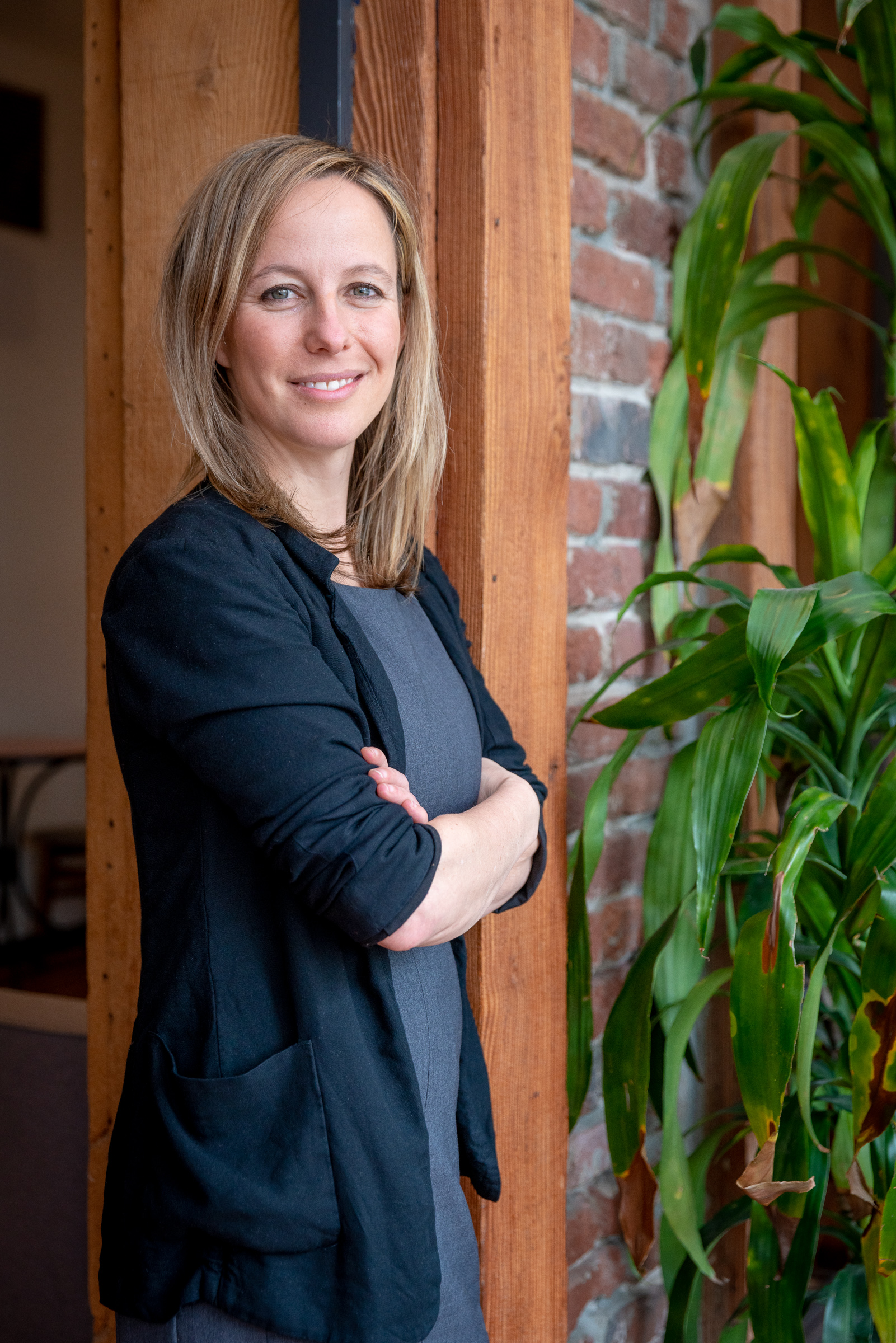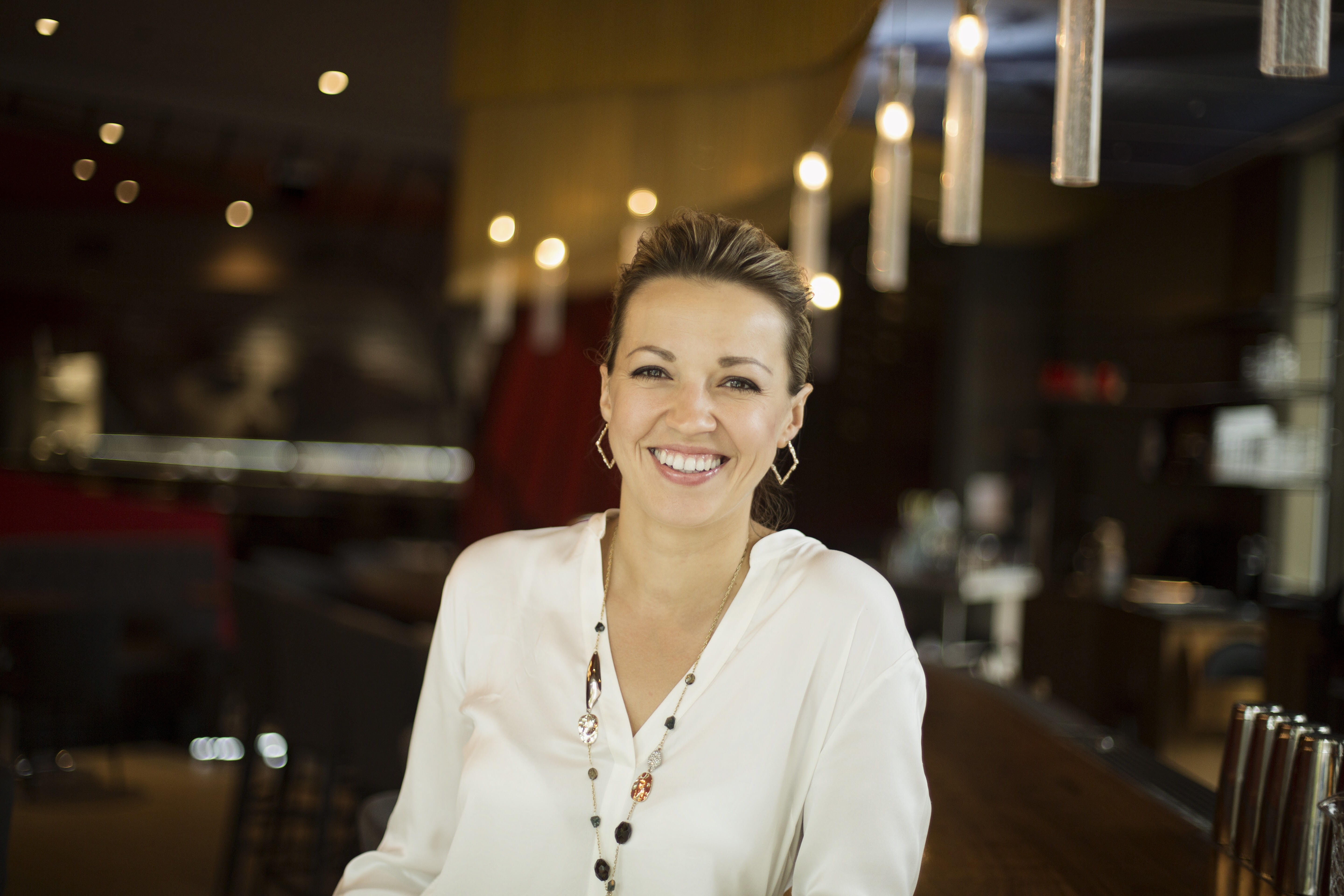
In the Spotlight: Kristen Berman, co-founder of Irrational Labs
In the summer of 2015, The New Yorker put out an article called “The Really Big One,” predicting that a massive earthquake will destroy most of the Pacific Northwest. I happened to be visiting family in Seattle the weekend after this article came out, and we stopped at the flagship REI store because we’re addicted to expensive hiking gear.
As I was browsing the food aisle, a woman next to me nervously picked out four or five freeze-dried meals, looking completely out of place. She turned to me and explained, “I know this is stupid, but I read that article, and I just figured I should do something to be prepared.”
People are irrational. We know that a couple of camping meals won’t save us from a mega-earthquake, but buying them can still put our minds at ease.
But our irrationalities aren’t random. They’re predictable and measurable, and Kristen Berman, co-founder of Irrational Labs, has built a career out of studying those irrationalities through the field of behavioral economics. Her San Francisco-based firm helps companies and nonprofits understand and leverage behavioral economics to increase the health, wealth and happiness of their users.
A few years ago, Kristen spoke with a small group of Doyenne entrepreneurs about how they could leverage behavioral economics to design better products and grow their businesses. I followed up with Kristen to see if she would share more of her insight for Audacity in Action, and she graciously agreed — and even indulged me in a few questions related to my biggest personal pet peeve in marketing. Read on for an edited transcript of our conversation!
Tell me a little bit about how entrepreneurs can use behavioral economics. I’m guessing it could be helpful for identifying your target market?
As entrepreneurs we’re often told to go out and do interviews with potential users. But from a behavioral economics point of view, doing interviews is interesting, but typically we don’t trust customers to represent things accurately. If you ask me about my past behavior, I may represent something that I want to believe is true (for example I won’t tell you that I text and drive, even though I may actually do this once in a while). And if you ask me about my future, I won’t predict my lack of self-control (for example, I want to eat healthily but will opt for french fries when hungry). And if you ask why this brand of coffee is my favorite brand of coffee, I probably will explain that I enjoy its local origins and depth of flavor. I probably won’t be able to explain that I bought it the first time because it was eye level at the supermarket.
When we ask people questions, we’re frequently misled by their answers.
So how do you find out what people are actually going to do?
We have a process called behavioral design, where we focus on what people do versus what they say. Our first step is the behavioral diagnosis where we map every step someone takes to the desired behavior. So the question is, “What do you want people to do?” And, “In the current state, how are they doing this?”
If I were to go get coffee before work, I’d have to set the alarm, get dressed, get the kids out the door, and if I make it in time, I can maybe get coffee, but if the line is too long, I won’t have time. So if I’m designing a solution to help someone get coffee every morning, I care more about the environment of decision making, than about the customer’s attitudes and beliefs.
Gotcha — making that map can help you see where the friction is and where there might be opportunities for new solutions. What about in the earliest stages of an idea, are there applications of behavioral economics there?
If you’re not building a product yet, we’d have you do studies where you’re giving people hypotheticals, to get comparisons. If you just ask one question about one feature without something to compare it to, you’re not going to know if the answer is good or bad. Someone could love a new feature, but they may love everything! Or, they may hate your new designs, but they may hate all things. Likewise, we recommend companies test different versions of their new products or features. This way you can tell which product or feature is relatively better than another.
Second, we recommend testing in real-world environments. Most interview questions assume that people have preferences void of context. “Would you buy this?” assumes that people are not influenced by the design of the shelf or the design of check out flow. In behavioral science, we don’t really believe that people have fixed preferences. Context matters. Our preferences are influenced by so many other things.
What are some typical human behaviors that entrepreneurs tend to overlook when planning out their business?
The basic one is that they assume that people are more rational than they are. People don’t think about things deeply. So someone coming from an engineering background may assume everyone is like them, or that they think deeply about things. We need to build for the model that people make quick decisions based on heuristics and norms.
Can behavioral economics help entrepreneurs figure out their pricing?
Definitely. So most entrepreneurs are creating something totally new to the world, where the price isn’t already established.
Imagine if I were to offer you a trip to stay at Alcatraz for one night. How much would you pay for that? We’ve asked people that, and the answers range from “you’d have to pay me,” all the way to $10,000 per night because no one knows the value. It’s a one-of-a-kind experience. But if I said, “How much would you pay for a donut or a flight to LA?” these things are already established.
So you need to figure out what people are comparing you to. Is there an existing product they can compare you to? Or if it’s a service, a lot of times they compare you to doing it themselves, and they think, “My labor is free.” So if you run a cleaning company, people will compare to the cost of doing their own cleaning. But if you help them benchmark off of their hourly salary, then hiring a maid becomes very cheap.
What do you think most entrepreneurs get wrong about pricing?
Pricing is often relegated to marketing, but it’s a representation of value. And we create customers’ perception of value. It’s able to be moved easily with features. But we’re not going to create value out of nothing.
The idea that you’d hand over “pricing” to a marketer is crazy. This is a product decision — it involves the whole company.
One of the techniques of behavioral economics is to create social norms. Obviously, being an entrepreneur in Silicon Valley is already a social norm. Should ecosystem builders like Doyenne be trying to create a social norm around being an entrepreneur in other cities?
Let’s go back to that first question I mentioned: what are we trying to get people to do? To start a norm around entrepreneurship, we should ask what the actual barriers are to having entrepreneurs here and thriving. Well, money is one of them. Can you start lending clubs? Get better small business lending? Can you pay established entrepreneurs to move to your city and create that norm?
What I think ecosystem builders get wrong is that they focus on building community as the behavior to solve. It’s really hard to get small businesses to come to a lunch meeting, unless they have a problem that they need answers for, and lunch is the only place to get those answers.
Can I pick on one of my personal pet peeves? I’m curious how you feel about “growth hacking,” which is kind of like behavioral economics, but mostly just involves slapping a referral bonus on everything. Is there a behavioral economics explanation for why referral bonuses feel so slimy?
Referral bonuses are tricky because trust and friendship comes in. I’m afraid that no one is going to trust me if I’m getting the referral bonus as well. The referral bonus ecosystem hasn’t figured out how to help me signal that this is actually a good thing, since people assume I’m only referring them so I can get money. It messes up the signal.
But, if I say to a friend, “I have 10 free Class Passes to give out, and I’ve picked you,” then the signal isn’t messed up. Companies need to figure out how to help the recommender signal to their friend that this is a real deal, and it gets really muddy when you have an incentive to do that. Scarcity could help with that. Then you could signal to your friend, “I find this is an important thing, but I only have one free thing to give, and I’ve picked you out of all my friends to get it.”
Oh, and another problem is that a lot of companies ask you to refer them before you’ve even gotten value from the product. So why should anyone trust you? A better system would be, if you use this app for 30 days, then we’ll give you a referral code.

